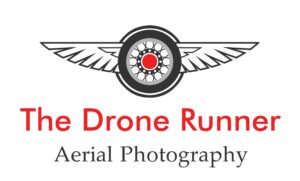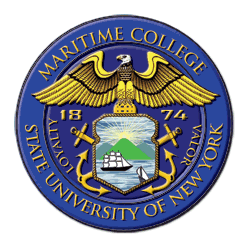The Role of the Consulting Engineer – Expert Witness
Loss to property by windstorm, floods, fire are usually attributed to the acts of Mother Nature and the occurrence of accidents are unavoidable. When fires, floods, earthquakes, tornadoes, hurricanes, structural collapses, leaking roofs, vehicle crashes, or any other structurally damaging event occurs, insurance companies are there to help businesses and homeowners set things right. Consulting engineers are often called upon by insurance companies and attorneys representing property owners to help adjusters evaluate a loss. In fact this is almost a regular procedure of insurance companies using the services of “their hired” consulting engineer experts to either Deny, Delay or Defend their position when the insurance company offers a small dollar amount to settle a covered claim. In fact this was the case with State Farm Insurance attempting to underpay or deny valid hurricane Katrina claims in the FloridaGulf by having “their” paid consultants provide false information that attempted to point the damage causation to flood damage (which was not covered by the State Farm Insurance policies. This did not work as many lawsuits were files and State Farm eventually paid. The consulting engineer’s job (on both sides of the settlement process) can involve determining the cause of a failure, identifying and quantifying damage, designing repairs, or a combination of these tasks. Although working with insurance companies is a specialized niche unto itself, structural engineers without previous insurance consulting experience are inevitably asked to provide professional guidance and assistance when wide spread disasters or catastrophic events strike a region. When such disasters strike, insurance companies often rely upon local consulting engineers.
Define the Scope
At the onset of the assignment, the engineer should obtain a clear and concise scope of work from the insurance adjuster. If the insurance adjuster does not provide a specific scope of work, the engineer should follow up until the adjuster qualifies why the engineer is being hired. Possibilities for being hired include investigating a cause of a structural failure, determination of the extent of the structural damage, development of subrogation information, preparation of a scope of repair, development of a repair design, drafting specifications, etc. Engineers who perform the wrong task waste time, money, resources, and potentially destroy evidence. Total knowledge of the local and state-wide building codes that were in effect when the property was first built, remodeled and presently. This is very important due to the fact that most Florida homeowners policies have provisions that pay a certain percentage of the loss (usually chosen by the property owner at the time of policy purchase) above the loss amount so that the property can be “upgraded” to current codes as dictated by the local Building Department . SEE SECTION BELOW ON CODE UPGRADES.
Insurance representatives generally need to know the following information, but may not have the time or presence of mind to ask for it:
- Is it damaged? And how badly is it damaged?
- How did the damage occur?
- What or who caused the damage?
- When did the damage occur?
- Was it previously damaged, unsafe, or not compliant with the building code?
- What repairs are necessary due to damage?
- What repairs are necessary due to previous damage and/or deficiencies?
The investigative consulting engineer’s report should contain basic photographs from the outside, and overview photographs in addition to close-ups of any damage. The report should offer a narrative to provide the information necessary to help the insurance company manage the claim. Evidence should include photos, dates, times, names, interviews, witnesses, material facts, and field notes. A lack of documentation, an unclear description, or a seemingly unsupported conclusion can lead to delays and frustration for all involved parties.
Some claims do not resolve themselves and litigation occurs between the claimant and insurance company, or between the insurance company and the negligent party responsible for causing the loss. In that event, the investigating consulting engineer may be involved with the claim through to deposition and trial testimony.
Code Upgrades
The building codes change slightly every three years. As a result, older structures that may have complied with an older version of the code do not comply with the building code currently adopted by the building department having jurisdiction. When structural damage occurs, it is generally required that all structurally deficient items discovered or included in the repair process be brought to the minimum standards of the current building code. Insurance policies vary; however, it is common that improvements made to a structure beyond the pre-loss condition are not covered or are only partially covered by the insurance policy. To avoid a financial burden on the insured, the consulting engineer should not be over-conservative with the repair recommendations. Code upgrade issues commonly surface when the subject building is older, contains asbestos, exhibits decay, displays a lack of maintenance, and/or the building was constructed or added onto without engineering and/or a building permit.
Notice of Dangerous Conditions
All consulting engineers have an obligation to identify to the proper authority conditions that they believe are unsafe or present life safety concerns.
The consulting engineer does not have a duty to extensively examine and/or test all aspects of the structure being investigated, and should focus on the damage or issues involved in the loss. Nevertheless, during the course of their investigation should the engineer come across an aspect of the building that they recognize as unsafe, the engineer should notify the appropriate party or authority.
Hurricane Andrew (1992) Experience
I handled many cases after Hurricane Andrew in August of 1992. The largest dealt with shoddy construction performed by the Lennar Corporation where many homeowners sued Lennar. The link for the ABC News’ 20/20 report is here: 20/20 Report. Although I am not shown in the video, I was half of the team providing expert structural services along with my partner, James D. Rodgers, P.E.


